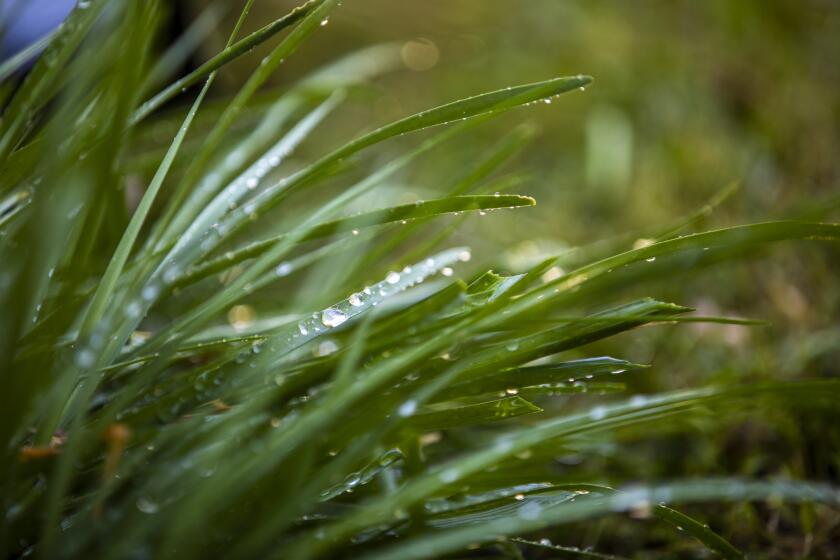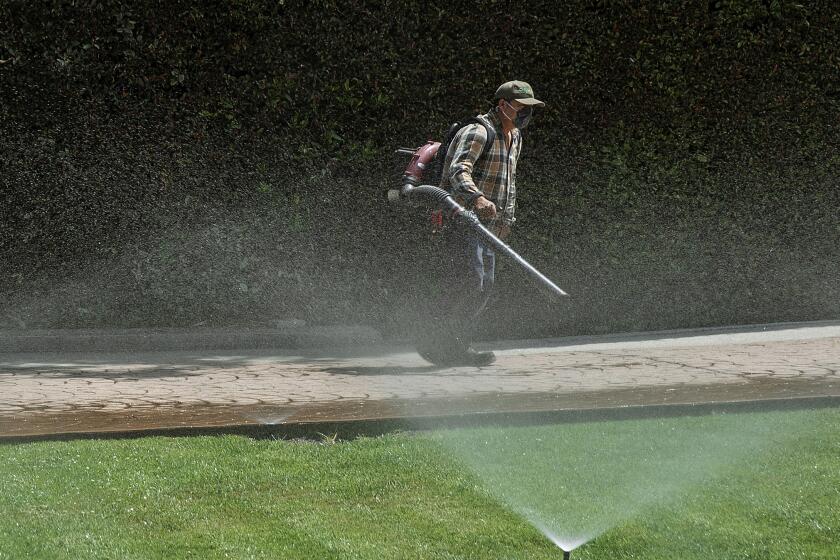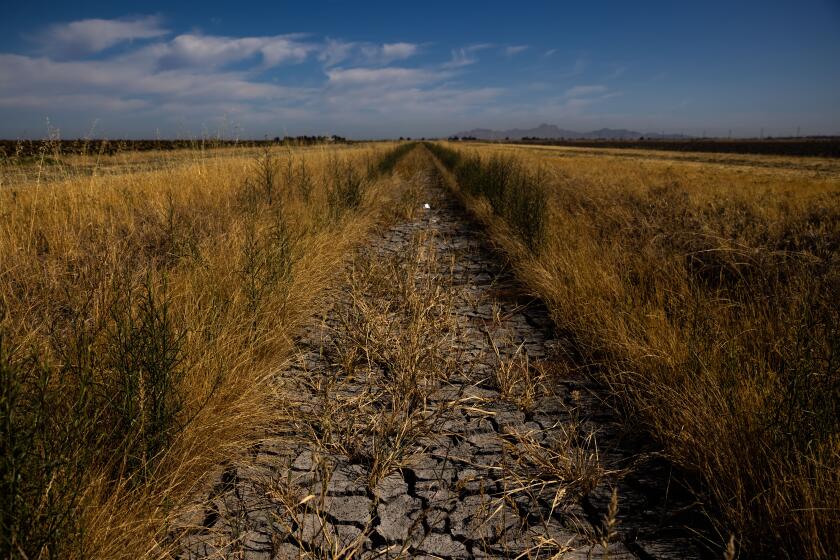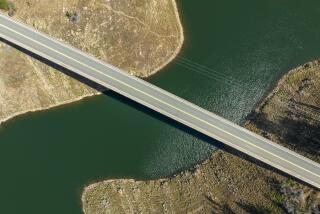California just adopted new, tougher water restrictions: What you need to know

- Share via
California water regulators strengthened the state’s drought rules this week, ordering local suppliers to take steps to reduce water usage to stretch limited supplies this summer. Gov. Gavin Newsom warned that more stringent statewide water restrictions could come if the state doesn’t make more progress on conservation soon.
Acting on an order from Newsom, the State Water Resources Control Board voted to adopt emergency drought regulations that require water suppliers to activate their local drought plans to prepare for a shortage of up to 20%. Those water-saving measures vary for each area and are based on each city or water agency’s drought plan.
As part of the new rules, the state also banned the use of drinking water for irrigating grass that is purely decorative at businesses and in common areas of subdivisions and homeowners associations.
Here is a breakdown of what is going on:
California water regulators have banned the watering of decorative ‘nonfunctional’ grass at commercial, industrial and institutional properties.
What are the latest changes?
- The regulations outlaw the use of drinking water for irrigating “non-functional” grass at commercial, industrial and institutional properties.
- The regulations define “non-functional” turf as grass that is “solely ornamental” and not regularly used for recreational purposes or community events.
- Areas that are irrigated with recycled wastewater aren’t subject to the grass-watering ban.
- The ban doesn’t apply to yards at individual homes.
- There are also exemptions for sports fields, grassy areas where people gather, and for watering to keep trees healthy.
- Rules require local water suppliers statewide to activate “Level 2” of their local contingency plans to prepare for a shortage of up to 20%.
California Gov. Gavin Newsom is urging local water suppliers to step up conservation efforts, warning that mandatory restrictions could come next.
- The regulations require each urban water supplier to submit an annual water supply and demand assessment. Each agency that has filed a shortage contingency plan should take steps to reduce water use to prepare for a shortage of between 10% and 20%. Water agencies that haven’t yet turned in a contingency plan are required to take similar steps, including having a public information campaign focused on conservation and enforcing a rule limiting outdoor watering to two days a week, with limited hours before 10 a.m. or after 6 p.m.
What’s the big picture?
The severe drought, now in its third year in California, is one of the most extreme on record and has been worsened by hotter temperatures with global warming.
Across the western U.S., scientists have found that the extreme dryness since 2000 has become the driest 22-year period in at least 1,200 years, a megadrought that research shows is being intensified by climate change. Scientists have described the trend as aridification, saying the West must prepare for heat-driven drying to continue as temperatures climb with the burning of fossil fuels and rising levels of greenhouse gases.
Even as the drought has worsened, conservation efforts have lagged in California’s cities and towns.
In July, Newsom called for Californians to voluntarily cut water use 15%. But the water savings through March have amounted to just 3.7% less than a 2020 baseline. Water use in cities and towns rose by nearly 19% in March, an especially warm and dry month.
For part of the 2012-16 drought, then-Gov. Jerry Brown ordered a mandatory 25% reduction in urban water use. Many Californians responded by cutting back and taking steps such as converting lawns to drought-tolerant plants.
New drought rules in Southern California aim to cut daily water use to 80 gallons per person. Water managers say hitting this number is critical.
At a meeting with officials from large water districts this week, Newsom called for more aggressive steps to reduce water use. Some who attended the meeting said Newsom called the recent increase in water use a “black eye.”
The governor warned that if conservation efforts don’t improve in the next two months, his administration could be forced to impose mandatory water restrictions throughout the state
What about agriculture?
Though the new measures focus on improving conservation in urban areas, the drought is also affecting agriculture and food production. Many growers have seen their water deliveries cut sharply, and have turned to pumping more groundwater or leaving some farmland dry and unplanted.
Of the water that’s diverted and pumped in California, state data show that on average about 80% is used by agriculture while the other roughly 20% is used by cities and towns.
In a recent report for the California Department of Food and Agriculture, researchers calculated that reduced water deliveries resulted in 395,000 acres of cropland left dry and unplanted last year — an area larger than Los Angeles.
What’s coming next for Southern California?
The Metropolitan Water District in April declared a water shortage emergency and ordered restrictions on outdoor watering in parts of Los Angeles, Ventura and San Bernardino counties that rely on the State Water Project, which transports water southward from the Sacramento-San Joaquin River Delta. The water restrictions are set to take effect June 1 and are aimed at reducing water use by about 35%.
Officials said that’s the number needed to conserve critical supplies — and to prevent a full outdoor watering ban as soon as September.
The added heat from global warming has made drought-stricken lands extra-dry. It will take more precipitation than usual to end it.
Southern California communities that are dependent on water delivered from Northern California by the State Water Project normally demand about 380,000 acre-feet of water between June and December. But the projected supply during the second half of this year is far less — only 250,000 acre-feet. Facing the real risk of those supplies running dry, the MWD’s managers say immediate cuts will help reserves last.
Other tips?
State officials have shared various tips about how people can help save water at home:
- Limiting outdoor watering. Cutting back by one day a week can save a substantial amount.
- Taking shorter showers. Going to a 5-minute shower can help shrink water use.
- Taking showers instead of baths. A bath uses up to 2.5 times the amount of water as a shower.
- Using a broom instead of a hose to clean outdoor areas can save about 6 gallons of water every minute.
- Washing full loads of clothes helps save water.













